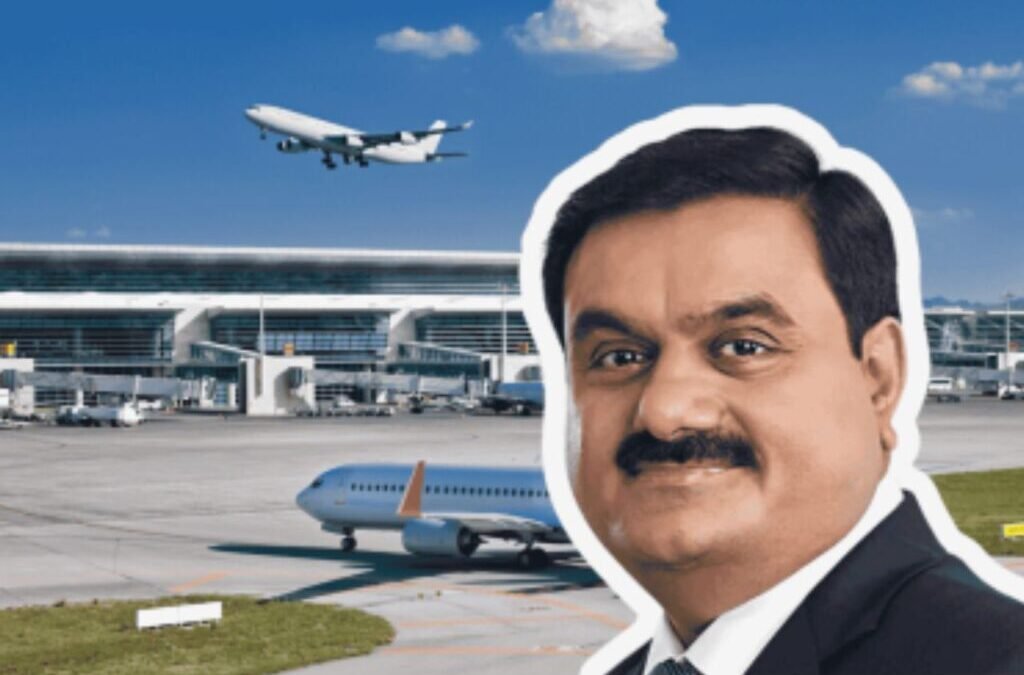Synopsis- Adani Group’s ₹20,000 crore airport city-side development transforms airports into commercial hubs. Focused on Mumbai and Navi Mumbai, it boosts real estate, infrastructure and employment while reshaping urban growth, investor confidence and policy planning for India’s next airport-led transformation.
Introduction
Adani Group’s ₹20,000 crore city-side expansion aims to transform Indian airports into integrated business and lifestyle destinations, particularly in Mumbai and Navi Mumbai, driving a real estate boom and reconfiguring airport zones into vibrant urban and commercial communities.
The Vision and Strategic Shift
Adani has committed to increasing non-aero revenue from 50 per cent to 70 per cent by 2030 as a way of mitigating its reliance on airline operations and to stabilise its cash flow. Adani’s strategy draws inspiration from global airport cities such as Schiphol (Amsterdam), Zurich and Sydney, where airports have a well-thought-out cohesive character as a lifestyle and business centre, not merely a place to make a transit. His objective is to create malls, hotels, and offices while extracting value from urban land that is prime city-side airport land and creating, in perpetuity, a commercial asset. The model is aligned with Adani’s broader infrastructure roadmap, passenger experience and supports its airport business IPO case.
Key Projects: Navi Mumbai and Mumbai in Focus
- Central Focus: Adani’s flagship development covers 240 acres of city-side development at Navi Mumbai International Airport.
- Integrated Commercial Infrastructure: The project includes five hotels with over 1,000 rooms, three office towers, a large retail mall and serviced apartments – one of the most ambitious airport-led commercial developments in the country.
- Phased Development Timeline: Phase 1 of the project will launch in synchronization with the airport in October 2025, with the full buildout projected to be completed by 2031.
- Mumbai Airport: Though regulatory and land limitations will ultimately restrict expansion in areas of the airport, Mumbai Airport will improve the city-side commercial aspect of the experience.
- Wider Airport Network Potential: Adani will also be facilitating the unlocking of 655 acres of commercial land for development across eight airports.
- Investment Priorities and Financial Structure: A staggering 70% of the ₹20,000 crore investment is being focused on under Mumbai region, partially funded through $750 million of external borrowing with risk-managed phases.
Commercial Real Estate Impact
- Rise in Commercial Property Demand: The development is expected to significantly boost demand for Grade A office spaces, retail and premium hotels near Navi Mumbai Airport and Mumbai Airport.
- Entry of Global Hospitality Players: Reports suggest that Adani is in discussions with global hotel brands with a firm interest from multinationals and tech brands, and start-ups looking to engage new airport economies.
- Rising Land Prices in Key Corridors: In some areas like Panvel, Ulwe, Andheri and Bandra, expectations are that land prices will increase markedly, spurred on by commercial interest and improved infrastructure.
- Growth in Ancillary Service Sectors: The real estate boom may also translate to ancillary services like logistics, catering, transport, facility management, and even broader activity in the surrounding economy.
- Strictly Commercial, not Residential: This whole exclusively commercial initiative, you cannot do standalone residential projects as outlined in the airport land rules. This is also differentiated from a normal mixed-use area.
Also read: Top 10 Well-Planned Cities in India 2025 – See Which City Tops the List
Stakeholder Implications and Challenges
The project increases investor confidence in commercial real estate, particularly surrounding airports with much walk-through traffic. Income from rent and growth in capital may improve. There are many opportunities for real estate companies to partner, lease, and generate supply chain opportunities, although they could be competitive with Adani’s direction. For these hubs to be successful, they will rely on the right roads, metro connections, water, reliability of power and last-mile solutions, which require coordination of the different levels of government (and the public sector). In Navi Mumbai, the timing of clearances is not as difficult as it is in Mumbai; however, longer times to clear could be experienced, which would lead to a lack of action. To maintain momentum, the authorities must assist with permits. The new hotels, office buildings, logistics and hub locations will provide jobs across a wide area of trades, construction, hospitality, technology, and retail and consumer services.
Conclusion
Adani Group’s airport development is more than just an expansion plan—it is an urban transformation. It reimagines connectivity, commercial real estate, and urban growth by establishing airports as economic engines. Mumbai and Navi Mumbai are the national benchmarks for change.
Written by N G Sai Rohith
The post Adani Plans to Invest ₹20,000 Cr in Diversifying Airport Business; Will it Boost the Commercial Real Estate? appeared first on Trade Brains.

